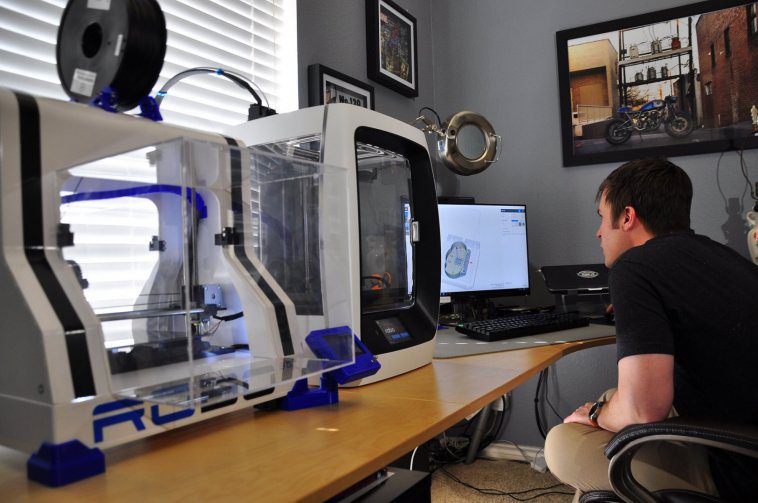GT-Moto is a motorcycle shop in Texas using a Robo R2 3D printer and Robo’s carbon fiber PLA to save time and money while prototyping custom parts.
Every year GT-Moto, a custom motorcycle shop in Plano, Texas, builds a motorcycle for charity.
Owner Sofi Tsingos explains that she’s loved motorcycles since she was a little girl and was inspired by her father. After her father was diagnosed with cancer one year, she came up with the idea of building a motorcycle together as a form of therapy. This work physically and mentally occupied both father and daughter during a difficult time.
After the motorcycle was complete, Tsingos sold it for $16,000 and donated the proceeds to St. Jude’s Hospital. This has since become a yearly tradition, and the profits always go to cancer research organizations.
However, building a motorcycle is no easy process. Tsingos had to come up with some way of lowering costs of parts and speeding up iterations. After hearing about 3D printing, she decided it would be the best way to prototype and test parts.
“When we first saw a 3D printer and realized that we could put one on our desk and just design and immediately produce a part, we knew that was it,” explains Tsingos.
GT-Moto Zooms Through Iterations with 3D Printing
During Tsingos’ first build, she and her father faced multiple challenges. This was largely due to the fact that they were creating their own designs and outsourcing parts. These parts would often not only be costly, but they also wouldn’t fit.
A solution arrived one Christmas, when Tsingos bought her design and modeling expert, Ross Freehling, a 3D printer. She chose a Robo R1+, and since then they haven’t looked back.
With 3D printing, Tsingos explains that she can quickly print creative ideas and test them out with the right dimensions. It’s also possible to go through multiple iterations until a part is perfect. Instead of waiting weeks, parts take just hours to print.
“3D printing really makes it easy to take ideas and turn them into a physical item to place onto the motorcycle, in a matter of hours and at basically no cost,” explains Tsingos.
“Since we were able to do this at our shop, we no longer need to deal with the high costs and slow lead time associated with outsourcing jobs. Plus, lots of time has also been saved by not having to communicate back and forth during the prototyping phase.”
GT-Moto has now upgraded to the Robo R2 and they regularly print with Robo’s carbon fiber PLA. Tsingos adds that the technology saves multiple pieces of metal from going in the trash. Want to find out more? Visit the GT-Moto website.
Website: LINK



